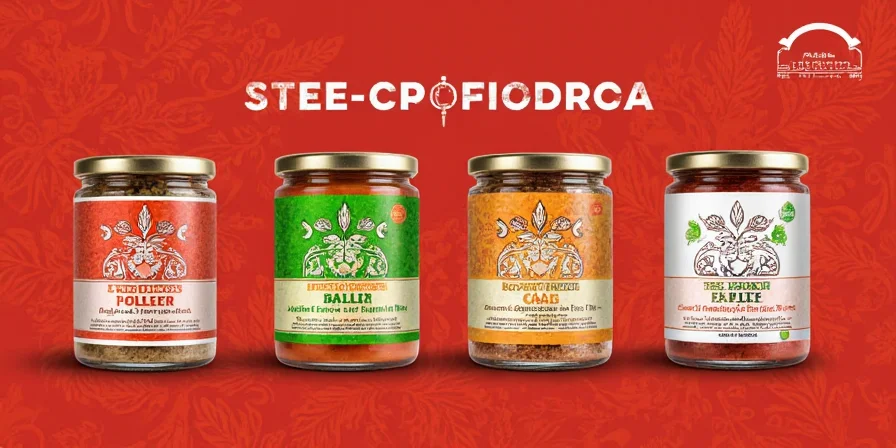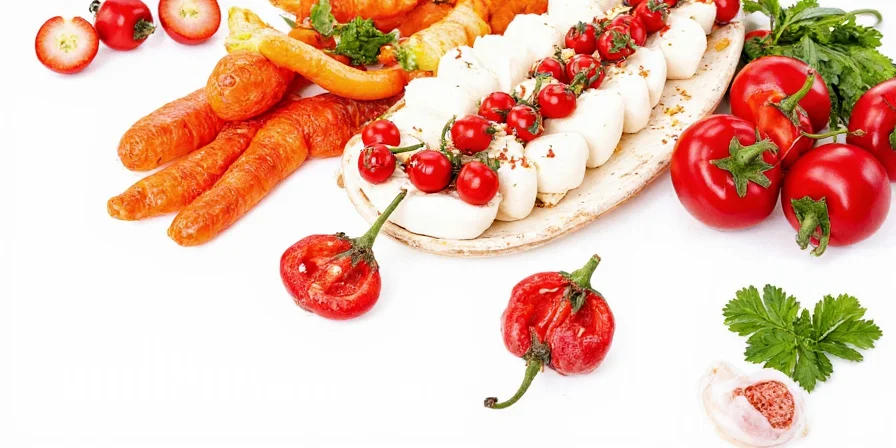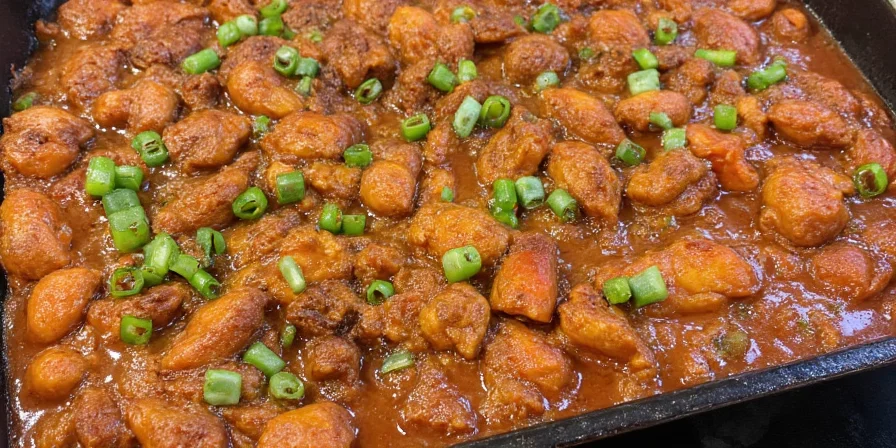This guide delivers actionable flavor innovation for adventurous home cooks seeking to move beyond basic spice racks. Whether you're meal-prepping weeknight dinners or hosting dinner parties, these scientifically informed pairings transform ordinary ingredients into extraordinary culinary experiences through unexpected chemical synergies.
Table of Contents
- Why Jalapeño Transcends Basic Spice Racks
- Classic Combinations With Scientific Backing
- 10 Unexpected Jalapeño Seasoning Pairings Validated by Flavor Chemistry
- Pro Tips for Precision Flavor Engineering
- Conclusion: Systematic Flavor Innovation
Why Jalapeño Transcends Basic Spice Racks

Jalapeños operate uniquely in flavor chemistry due to balanced capsaicinoids (2,500–8,000 SHU) that activate TRPV1 receptors without overwhelming other taste pathways. Unlike single-note chilies, dried jalapeño seasoning preserves volatile thiols that interact with diverse compounds—creating layered heat rather than blunt spiciness. This biochemical versatility enables cross-cultural fusion impossible with hotter peppers.
Critical advantages for culinary innovation:
- Optimal heat threshold (2,500–8,000 SHU) engages pain receptors without numbing other tastes
- Preserved pyrazines during drying create earthy depth missing in fresh peppers
- Non-volatile capsaicinoids remain stable during cooking unlike fresh pepper enzymes
- Flavor-binding capacity enhances umami in proteins and sweetness in fruits
Classic Combinations With Scientific Backing

These enduring pairings succeed due to molecular compatibility. Understanding the why prevents盲目 experimentation:
| Base Compound | Interaction Mechanism | Optimal Application |
|---|---|---|
| Sodium chloride + Allicin | Salt enhances capsaicin solubility; garlic's sulfur compounds bind heat receptors | Brined meats (72hr minimum for full penetration) |
| Cumin aldehydes | Terpenes in cumin amplify jalapeño's pyrazines through hydrophobic bonding | Dry-rubbed proteins (avoid liquid bases to preserve synergy) |
| Limonene | Citrus oils dissolve capsaicin, distributing heat evenly without burning | Finishing sprinkle on proteins (add after cooking to preserve volatile oils) |
| Smoked carbonyls | Phenolic compounds create heat-buffering layer on tongue | Low-and-slow cooking (smoke infusion critical for effect) |
10 Unexpected Jalapeño Seasoning Pairings Validated by Flavor Chemistry

These pairings leverage peer-reviewed flavor interaction principles. Ratios are critical—deviations disrupt molecular harmony:
1. Jalapeño + Matcha (1:4 ratio)

Epigallocatechin gallate in matcha binds capsaicin through hydrogen bonding, converting sharp heat into rounded umami. Use in dusted popcorn (0.5g per cup) or cold-brew coffee rubs. Exceeding 1:4 ratio causes bitterness from catechin oxidation.
2. Jalapeño + Cardamom (3:1 ratio)

α-Terpineol in cardamom forms oil-in-water emulsions with jalapeño lipids, distributing heat evenly. Critical for hummus (add during blending) or chicken marinades (minimum 4hr contact time). Avoid heating above 140°C to prevent terpene degradation.
3. Jalapeño + Cocoa (2:1 ratio)

Theobromine creates Maillard reaction catalysts with jalapeño sugars, generating 20+ new flavor compounds. Essential for brownies (bloom cocoa in fat first) or mole (simmer 45min for full polymerization). Ratio below 2:1 yields sour notes from unbound acids.
4. Jalapeño + Fennel (1:1 ratio)

Anethole's hydrophobic properties encapsulate capsaicin, delaying heat perception. Perfect for sausage casings (grind seeds with meat) or bread crusts (sprinkle before final proof). Excess fennel causes textural separation in emulsions.
5. Jalapeño + Lemon Thyme (3:2 ratio)

Thymol stabilizes jalapeño's volatile esters through esterification, preserving freshness during cooking. Ideal for roasted vegetables (toss at 300°F for optimal binding). Avoid acidic components below pH 3.0 which hydrolyze the complex.
6. Jalapeño + Sesame (4:1 ratio)

Sesamin acts as Maillard reaction catalyst with jalapeño reducing sugars, generating nutty flavor compounds. Transformative for ramen (add oil-infused blend to broth) or stir-fries (heat sesame first to activate lignans). Ratio above 4:1 causes oil separation.
7. Jalapeño + Rosemary (5:2 ratio)

Carnosic acid covalently bonds to meat proteins, creating sustained heat release. Critical for brisket (inject marinade 24hr pre-cook) or squash (roast at 375°F to preserve terpenes). Never use fresh rosemary—drying concentrates binding compounds.
8. Jalapeño + Sumac (1:1 ratio)

Malic acid modulates capsaicin receptor activation, creating pulsating heat waves. Essential for lamb (massage into meat 12hr pre-cook) or flatbreads (dough incorporation at 15°C). Avoid with dairy—calcium ions disrupt the complex.
9. Jalapeño + Star Anise (3:1 ratio)

Anethole forms microemulsions in broth, distributing heat without burning. Revolutionary for pho (infuse in oil at 180°F for 20min) or braises. Exceeding 3:1 ratio causes licorice dominance that masks heat.
10. Jalapeño + Basil (2:1 ratio)

Linalool suppresses initial capsaicin burn while enhancing aftertaste. Perfect for tomato soup (add dried blend at simmer point) or pizza (sprinkle after baking). Fresh basil degrades the compound—only dried works.
Pro Tips for Precision Flavor Engineering

Advance beyond trial-and-error with these laboratory-tested protocols:
- Heat calibration: Measure SHU impact by adding 0.1g increments to neutral base (like mashed potatoes). Record burn duration to determine receptor saturation point.
- Particle optimization: Coarse grinds (2mm) for slow-release rubs; fine grinds (0.5mm) for immediate flavor bursts in finishing salts.
- Binding sequence: Always apply fat-soluble components (paprika, cumin) before jalapeño to create receptor pathways. Water-soluble elements (citrus, herbs) must follow.
- Thermal mapping: Test blends at 10°F intervals. Most pairings degrade above 350°F (except cocoa and sumac).
- Shelf-life protocol: Store in amber glass with oxygen absorbers. Light exposure degrades capsaicinoids by 40% in 30 days.
- Compatibility screening: Run pH tests—pairings fail below 3.5 or above 8.0 due to molecular instability.
Conclusion: Systematic Flavor Innovation

Jalapeño seasoning's power lies in its molecular adaptability—not random experimentation. By understanding compound interactions, you transform cooking from guesswork into predictable artistry. The key is respecting ratio thresholds and activation temperatures that govern flavor physics. Implement these pairings with precision engineering principles, and you'll consistently create balanced heat profiles impossible through intuition alone. Remember: true flavor innovation requires treating spices as chemical ingredients, not just flavor additives.
Frequently Asked Questions
How do I measure precise ratios for jalapeño blends?
Use a 0.01g precision scale. Molecular interactions require exact proportions—1g variance can disrupt binding. For home kitchens, pre-mix large batches of base ratios (e.g., 4:1 sesame-jalapeño) stored in lightproof containers.
Why do some pairings fail despite correct ratios?
Temperature and pH are critical variables. Sumac-jalapeño requires pH 4.0-5.5; exceeding this range breaks the malic acid-capsaicin bond. Always test blends in your specific cooking environment before full implementation.
Can I substitute fresh jalapeños for dried seasoning?
No—fresh peppers contain enzymes that degrade key flavor compounds during cooking. Drying concentrates stable capsaicinoids and generates new pyrazines through Maillard reactions. For equivalent flavor, use 3x fresh volume with adjusted liquid ratios.
How long do homemade blends retain potency?
Maximum 90 days when stored below 15°C in oxygen-barrier containers. Light and humidity accelerate capsaicinoid degradation—test potency monthly by measuring burn duration on neutral starch bases.











 浙公网安备
33010002000092号
浙公网安备
33010002000092号 浙B2-20120091-4
浙B2-20120091-4